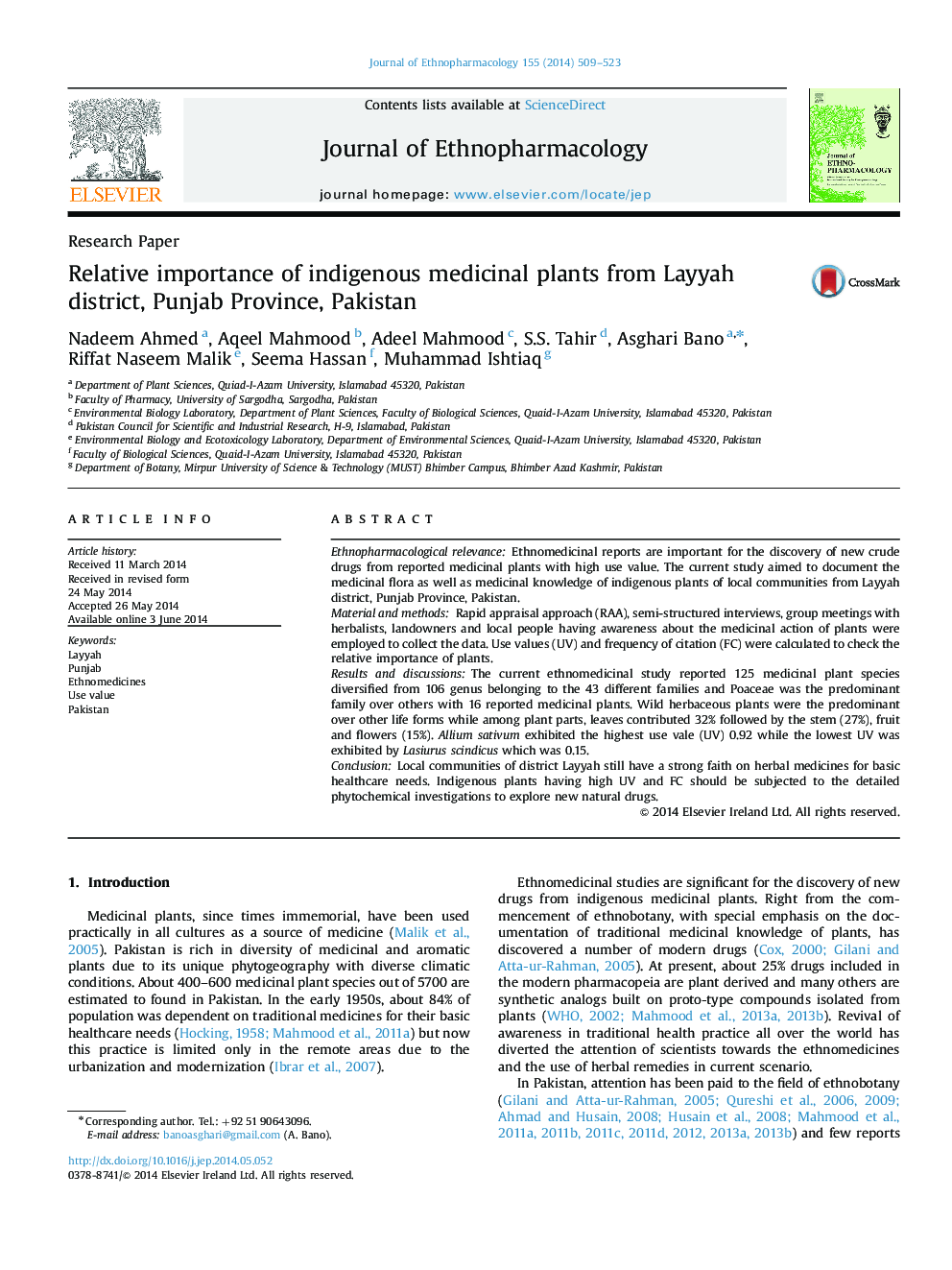| Article ID | Journal | Published Year | Pages | File Type |
|---|---|---|---|---|
| 5836414 | Journal of Ethnopharmacology | 2014 | 15 Pages |
Ethnopharmacological relevanceEthnomedicinal reports are important for the discovery of new crude drugs from reported medicinal plants with high use value. The current study aimed to document the medicinal flora as well as medicinal knowledge of indigenous plants of local communities from Layyah district, Punjab Province, Pakistan.Material and methodsRapid appraisal approach (RAA), semi-structured interviews, group meetings with herbalists, landowners and local people having awareness about the medicinal action of plants were employed to collect the data. Use values (UV) and frequency of citation (FC) were calculated to check the relative importance of plants.Results and discussionsThe current ethnomedicinal study reported 125 medicinal plant species diversified from 106 genus belonging to the 43 different families and Poaceae was the predominant family over others with 16 reported medicinal plants. Wild herbaceous plants were the predominant over other life forms while among plant parts, leaves contributed 32% followed by the stem (27%), fruit and flowers (15%). Allium sativum exhibited the highest use vale (UV) 0.92 while the lowest UV was exhibited by Lasiurus scindicus which was 0.15.ConclusionLocal communities of district Layyah still have a strong faith on herbal medicines for basic healthcare needs. Indigenous plants having high UV and FC should be subjected to the detailed phytochemical investigations to explore new natural drugs.
Graphical abstractDownload high-res image (293KB)Download full-size image
